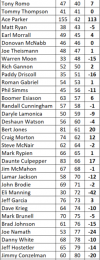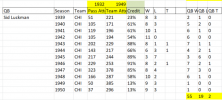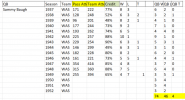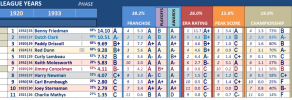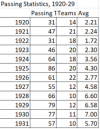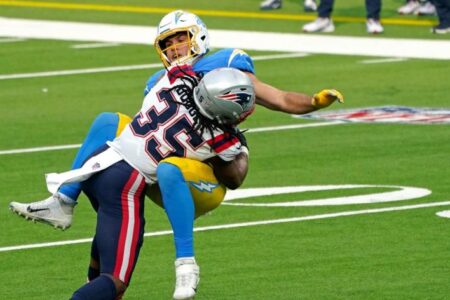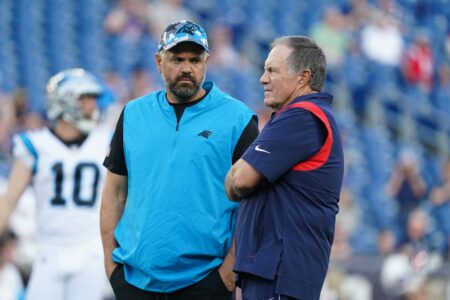- Joined
- Apr 3, 2006
- Messages
- 26,100
- Reaction score
- 52,114
The more things change, the more they stay the same.
In 1939, the Bears were riding a pretty steady franchise quarterback in Bernie Masterson, but they drafted Luckman to replace him. After Luckman's success, Halas was credited for the brilliant new system as Luckman ran the t-formation to perfection. Of course, the problem is that the t-formation was not a new concept, and things are never that seperated, where one team runs one system and other teams another system, totally different from each other.

Look at those splits...and the year after, Luckman continues his breakout and the league tries to copy the t-formation because, they think, that's the main impetus for their success...no one is saying Luckman isn't great, but the idea is that it's more about the system and concept, one that, I'll remind you, has just been sitting there, dormant, for years, in favor of the single wing.
And as teams try to copy that t-formation concept, do any sniff the level of success? Of course not. Because, as usual in the NFL, it isn't really about the Xs and Os so much but about the quarterback. Luckman has a sophomore slump season, and then in 1941, he basically breaks the league. 3 championships, and the one he lost was with arguably the greatest team ever. A passer rating of 107.5 (!) in 1943. Four first-team all-pros. Leads the league in every imaginable category.
Halas is damn good coach, but once again we see it's all about the players. After Luckman, the Bears are still looking for that great next QB, 70 years later.
In 1939, the Bears were riding a pretty steady franchise quarterback in Bernie Masterson, but they drafted Luckman to replace him. After Luckman's success, Halas was credited for the brilliant new system as Luckman ran the t-formation to perfection. Of course, the problem is that the t-formation was not a new concept, and things are never that seperated, where one team runs one system and other teams another system, totally different from each other.

Look at those splits...and the year after, Luckman continues his breakout and the league tries to copy the t-formation because, they think, that's the main impetus for their success...no one is saying Luckman isn't great, but the idea is that it's more about the system and concept, one that, I'll remind you, has just been sitting there, dormant, for years, in favor of the single wing.
And as teams try to copy that t-formation concept, do any sniff the level of success? Of course not. Because, as usual in the NFL, it isn't really about the Xs and Os so much but about the quarterback. Luckman has a sophomore slump season, and then in 1941, he basically breaks the league. 3 championships, and the one he lost was with arguably the greatest team ever. A passer rating of 107.5 (!) in 1943. Four first-team all-pros. Leads the league in every imaginable category.
Halas is damn good coach, but once again we see it's all about the players. After Luckman, the Bears are still looking for that great next QB, 70 years later.
Last edited:





